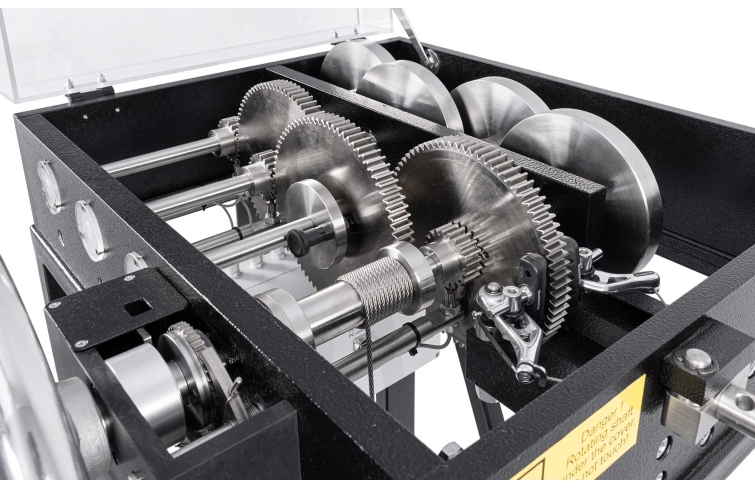Gears are employed as a link between driving machine and driven machine. They are used to vary torque and speed and to change direction. The aim of dynamic gear analysis is an understanding of the motion sequences and the influence of inertia.
The GL 210 unit is used to study the dynamic behaviour in single-stage, two-stage and three-stage spur gears during transient operation.
The trainer includes four parallel shafts, three drive wheels and three drive gears. Coupling pins can be used to couple the shafts such that different gear stages can be realised. A flywheel may be attached to each shaft in order to increase the rotational inertia. The gear is accelerated via a cable drum and a variable set of weights. The set of weights is raised via a handwheel. A ratchet prevents the weight from accidentally escaping. A clamping roller freewheel enables free further rotation after the weight has been released. A hand brake allows smooth deceleration. The transparent protective cover with safety lock prevents accidental contact with the rotating parts.
Inductive speed sensors on all drive gears allow the speeds to be measured. The measured values are transmitted directly to a PC via USB. The data acquisition software is included. The angular acceleration can be read from the diagrams.















